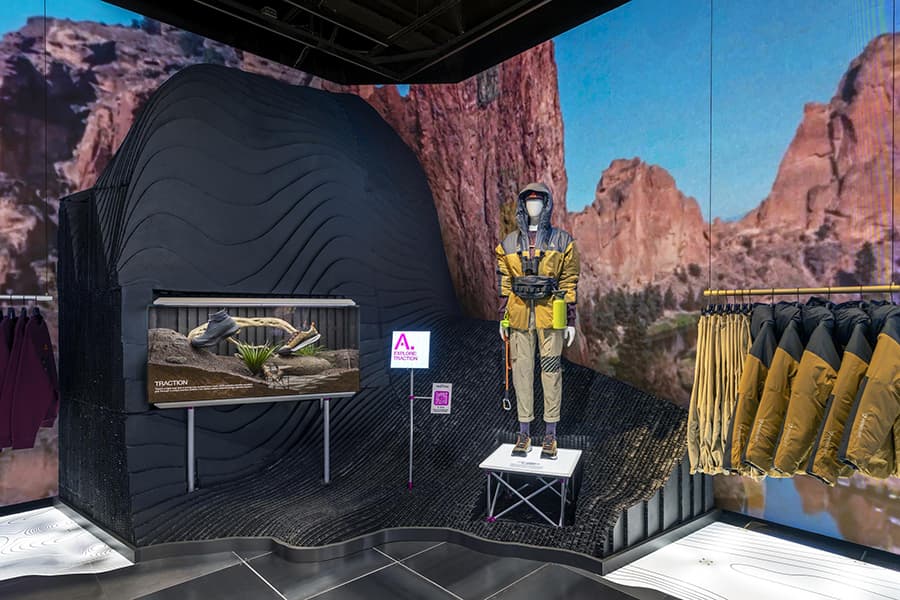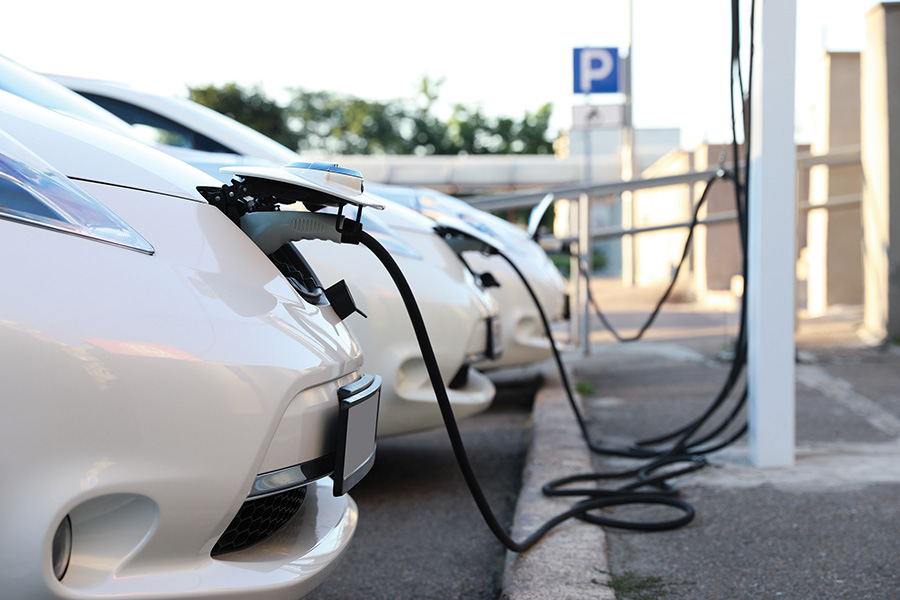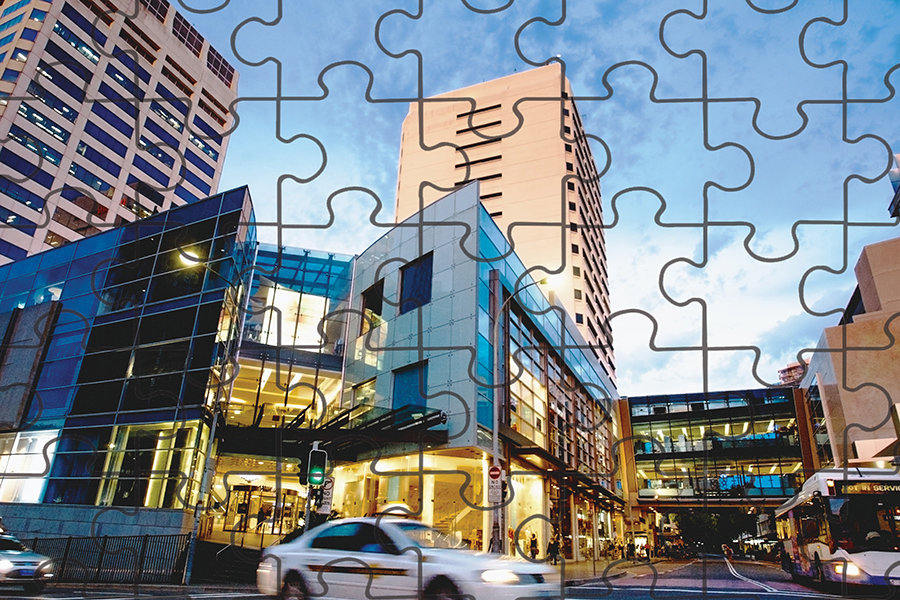Ten trends have emerged from the pandemic that will reshape the way we shop in the future: from localism to personalisation, from ethical shopping to touch-free shopping… and everything in between!
This article written by Susanne Pini was first published in SCN Vol. 39 No.1, March 2021

Last year, everything we knew and took for granted changed. The pandemic has completely changed the way we live, work and do business; but by causing global disruption, it has also brought with it many innovations and trends. Suffice to say, though, the pandemic has also accelerated the structural changes we’ve been seeing and experiencing across retail and society for some time now. On the one hand, there has been the blurring of borders between the physical and virtual world, but on the other, an ever increasing sense of community belonging and, with it, the recognition of the vital role that public places play in bringing people together.
Now as we gradually overcome the challenges of 2020, the question is which of these trends will prove to be game-changing and reshape the retail industry in 2021? Here is a snapshot of the projected top ten:
1. Localism and a desire to support local makers
One of the biggest unexpected outcomes of 2020 has been a major resurgence of the ‘shop local’ movement. Consumers have rallied around local retailers, increasing their support for small businesses offering personalised services and unique products. They’ve became more mindful of why and what they buy and whom they are supporting in the process. On a more practical level, the pandemic has strengthened the case for making neighbourhoods self-sufficient. With more people likely to remain working from home and living locally, neighbourhood shopping centres and local high streets are quickly emerging as the winning deal in the uncertain world of post-COVID retail.
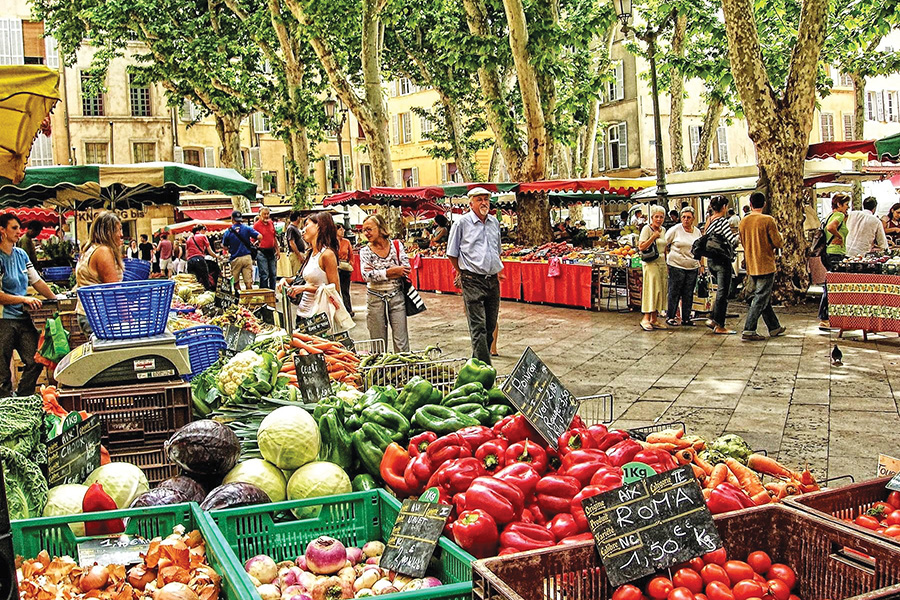
Local food market, Aix en Provence, France
According to Westfield’s recent research, today’s shoppers have developed a strong desire to be more connected with their local community, hence the look of the traditional shopping centre is also set to change as they morph into their surrounding environments. The research found that creating a destination space with high levels of interaction and sociability will be a priority, and we can expect that future retail spaces will be evolving into community hubs with 70% of consumers wanting them to reflect the people and communities they serve.
2. Increased use of virtual, augmented and mixed reality
Not surprisingly, this is a big one that actually involves several different trends, including AI, robotics, IoT, and extended reality (XR), which includes virtual and augmented reality (VR/AR). According to a Nielsen global survey, just prior to COVID-19, consumers listed AR and VR as the top technologies they’re seeking to assist them in their daily lives, with 51% stating that they would be willing to use AR technology to assess products. And while all this kind of technology in retail isn’t new, in 2020 it transformed from a nice-to-have to an essential part of retailers’ personalised offerings.
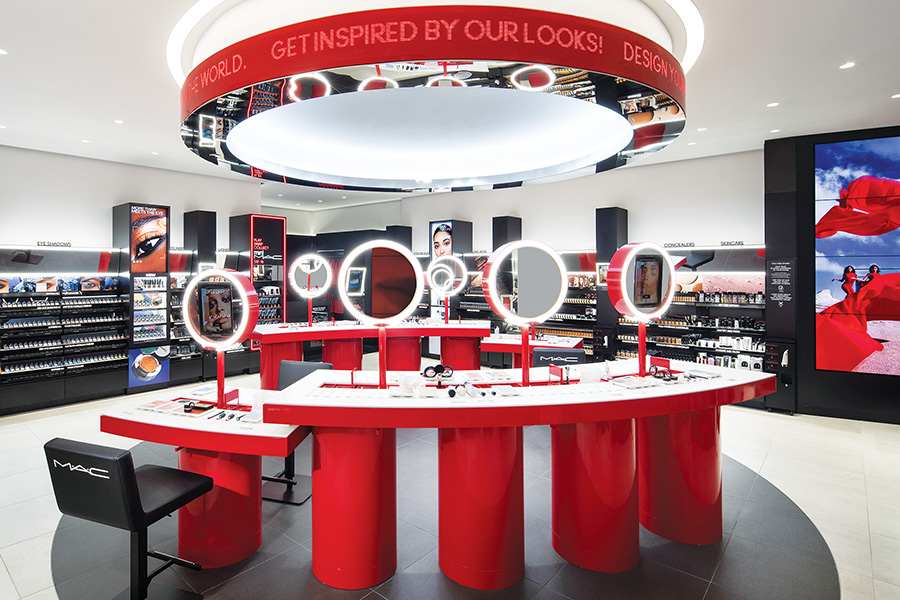
AR mirrors at MAC Cosmetics, Queens Centre, NYC
We can expect to see flagship stores acting more as discovery zones, aiming to create an emotional connection with customers, rather than directly selling stuff. Big brands like Nike and MAC Cosmetics are already investing in hybrid spaces and using technologies like AR, VR and body scans to create more compelling experiences. Nike created an AR-based outdoor challenge within the four walls of its ‘House of Innovation’ store in New York, while MAC just opened its NYC flagship, housing 16 virtual mirrors powered by AI, data analytics and RFID. The technology allows customers to pick up any beauty product in-store and watch as it instantly appears on their face.
3. Omnichannel
The retail landscape of 2021 will be omnichannel, and it will no longer be relevant to talk about online versus in-store as two separate shopping channels. Hybrid business models are popping up, offering shoppers a seamless omnichannel experience journey where the physical store is no longer the consumer’s final destination – it is just one step along the way.
Omnichannel retail has witnessed a substantial rise in recent years, with one in three shoppers using multiple channels to reach their purchasing decisions.
As summed up in Deloitte’s The Future of the Mall report, as technology advances, the savviest retailers will be focusing not on technology for technology’s sake, but on how to use it to deliver the entire customer journey to include “a seamless omnichannel experience that connects the online world to a captivating in-person experience in a right-sized, technology enabled, service-driven store”.
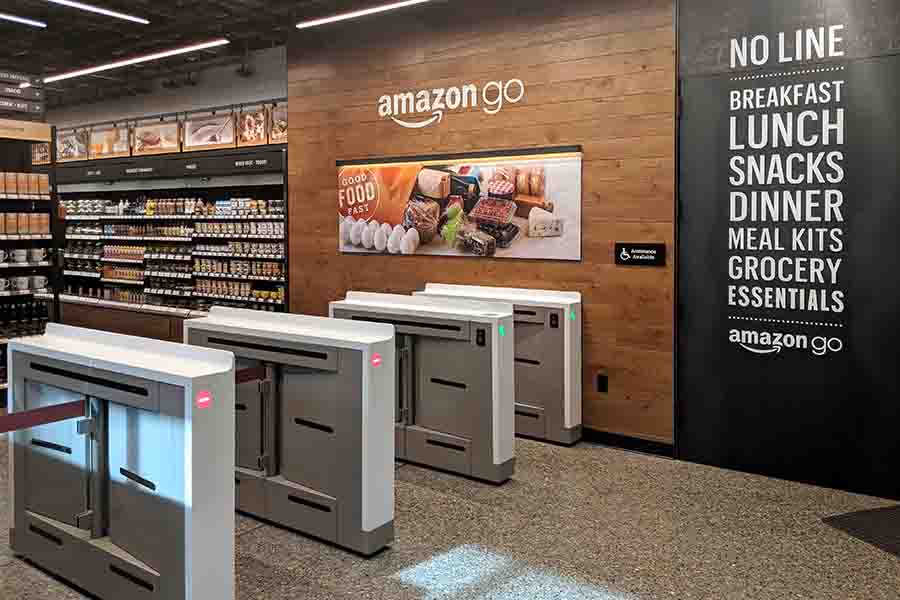
Amazon Go technology
At their most sophisticated, this trend includes initiatives such as Amazon’s famous cashier-less stores opening in the US and technologies like RFID and Bluetooth, already implemented in stores in Japan and China, that provide a seamless mobile handoff that transfers content to a shopper’s mobile phone without ever coming into direct contact with anything in-store.
4. Ethical shopping and conscious consumerism
The pandemic has really hit the reset button on societal values, and there is greater awareness of retail with purpose and authenticity. Consumers are more conscious of their shopping choices, and in 2021 they will be actively seeking to shop with retailers that reflect their social, cultural, environmental and political ideals.
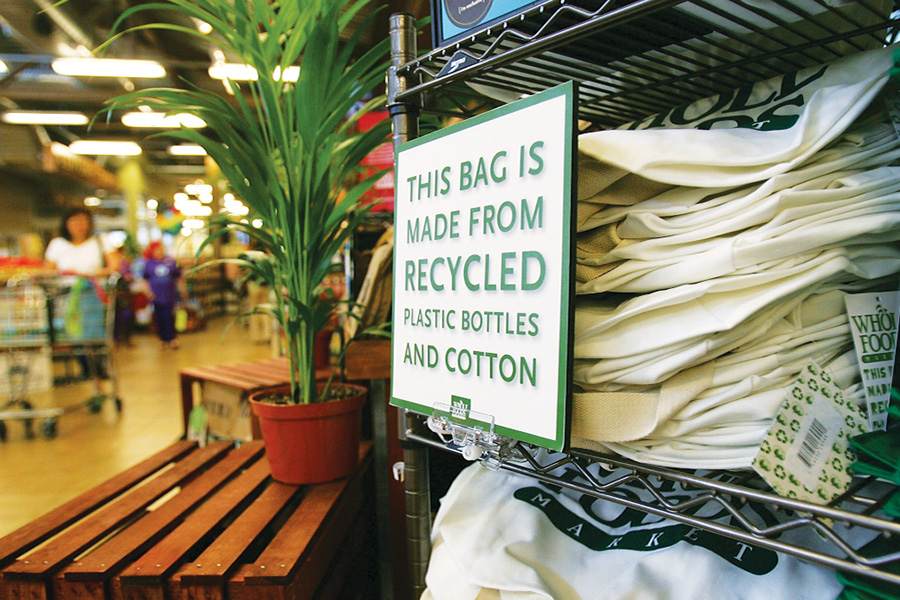
Ethical shopping
Transparency, values and ethics have never been more important to shoppers, which means brands need to prioritise them very soon. Gen Z, in particular, is looking beyond the physical product to retailers’ values and purpose. However, trust will be key and with this growing desire to shop ethically, the consumer is more discerning and less likely to fall for ‘greenwashing’, or businesses that pay only lip service to ethical considerations.
5. Rethinking the role of the store
Even before the fallout from COVID-19, to keep up with changing shopper preferences and habits, many retailers have already been shrinking their footprints, and predictions are that rental space requirements may now be reduced even further by 20% to 40%.
To stay current, retailers, especially those with large footprints, will need to rethink store designs and layouts and create more efficient, flexible, smaller floor plans, knowing now that a large physical footprint does not necessarily translate into larger sale volumes. The growing share of online purchases will also mean that stores do not need to carry as much inventory, and many can lean more towards a showroom approach. They can have a smaller physical space, using technology to create a more interactive interface with the brand and products, and leveraging data and analytics to predict footfall manage assortments and build personalised offerings.
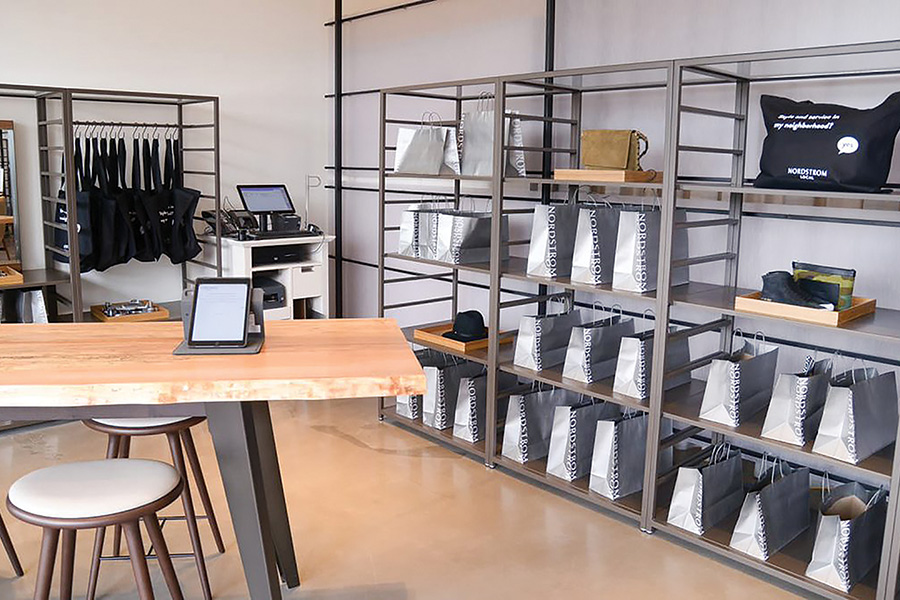
Nordstrom Local
Before the pandemic, some bricks-and-mortar stores, like US-based Nordstrom, had already been trying so-called showroom formats, with fewer items in stores, almost no inventory and with online only sales. Instead of goods, Nordstrom Local offers services, such as Click & Collect, style advice, tailoring/alterations, beauty services and merchandise that can be delivered to the store location in a couple of hours.
6. Touch-free shopping
Touch-less, pay-less, contact-less, door-less! COVID-19 has accelerated technologies and services that allow customers to shop with as little contact as possible. The retailers will certainly be implementing more ‘less’ solutions by integrating touchless technologies such as sensors, artificial intelligence, facial recognition and voice-activation that can help reduce touch and eliminate physical interaction in-store.
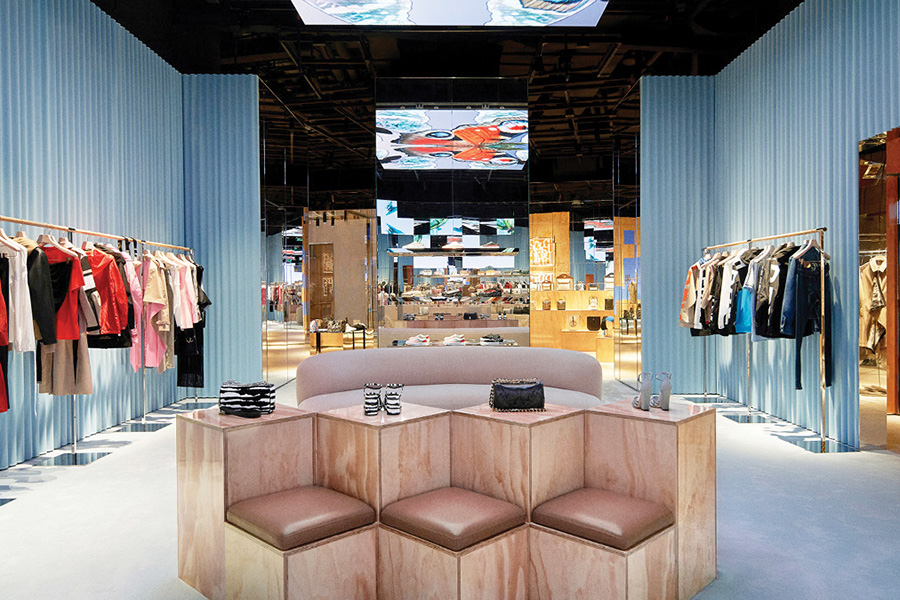
Burberry touchless store, Shenzhen, China
Before the pandemic, a big part of shopping was the hands-on experience, like eating samples at the grocery store, spending hours in the fitting room or trying a lipstick at the beauty counter. While some of these experiences might eventually come back, the newly formed habits and trends towards online transactions will stick. The physical store will be forced to change from trying to maximise foot traffic and dwell time, to allowing for a much more seamless back and forth, with savvy shoppers expecting faster, more convenient and smarter transactions.
7. Al-fresco dining and use of public places
At the time when there’s a growing consensus that being outdoors is safer than being inside, outdoor public spaces must be a central part of the path forward. Consumers will look to reconnect with nature and turn to open-air venues for leisure and socialising. Al-fresco dining took off as we have all witnessed how essential cafés and restaurants have become to our social lives and their pivotal role in our collective post-pandemic future. It’s not just all about street level, as we see more eateries and urban farms springing up in crowded cities, on top of shopping malls, from Melbourne to Shanghai and Singapore.
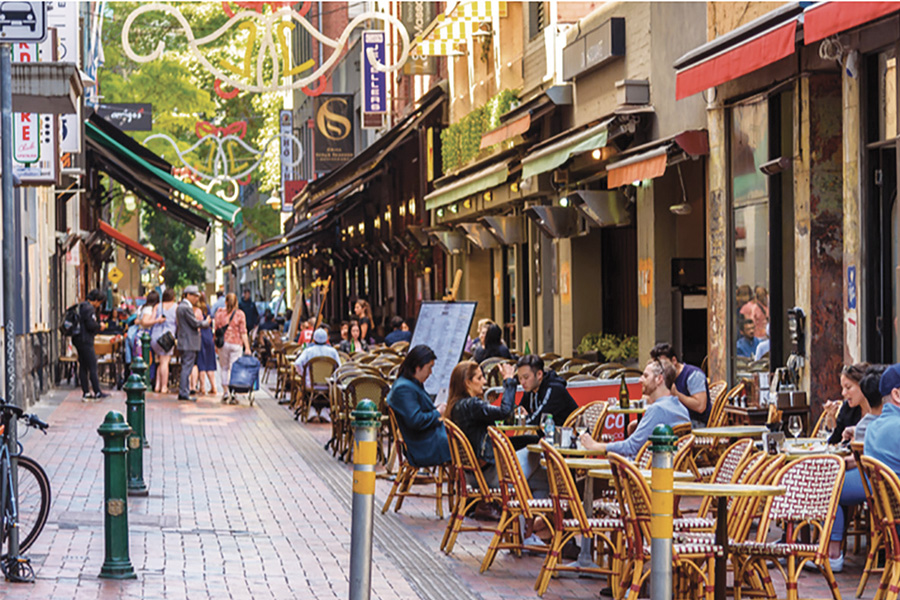
Outdoor dining, Melbourne
Open-air farmers’ markets provide another obvious model for how public spaces can serve everyday needs; however, with footpaths finally widening up, cities could explore other types of outdoor retailing, pop-ups and even some services like laundry pick-up, pet grooming, fitness activities and perhaps even haircuts and manicures! And as radical as it may seem, many of these trends and ideas aren’t that novel, they just might be new for the locality, and the future has finally brought them closer.
8. Personalisation
Forbes reported that consumers will spend 48% more when their shopping experience is personalised.
Well-heeled shoppers are used to receiving personal attention when shopping at high-end stores and personalising their high-value purchases. However, technology is now helping in a new age of mass-personalisation, allowing this to be carried out at scale across a growing range of goods and services. Recommendation engines are used in ecommerce to point us towards products we’re most likely to want or need. The same technology is now being rolled out in retail outlets, arming shop assistants with information on who we are, our preferences and our past purchases.
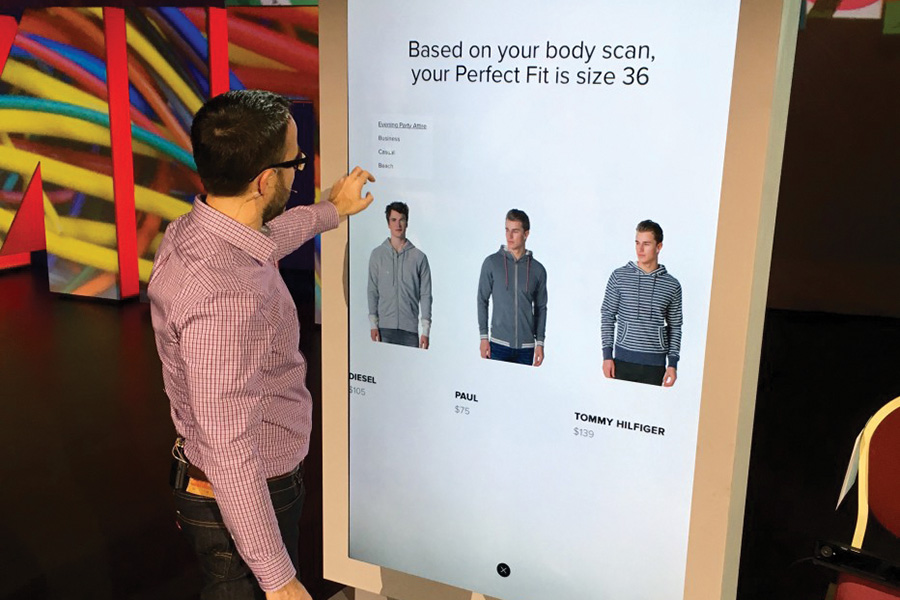
Personalised shopping
Consumers are craving exclusive, personalised shopping experiences via social media to build purchasing intent. They want curated edits, personal content, concierge services and instant 24/7 chat access to sales staff. The online social inspiration phase is a critical piece of the customer’s journey, which is focused on finding inspiration or inspiring others in social media. In fact, research has found that more than 70% of Gen Zs globally make their purchase decision during this shopping stage.
9. A resurgence of pop-ups and transient formats
As a business model, pop-up shops are perfectly positioned to weather this storm and place themselves firmly into the future. They are highly adaptable, they are fun, they support both independent creatives and big brands and can provide a clean and safe shopping experience, all in increasingly Insta-friendly designed surroundings.
Retail pop-ups have been a popular concept for years, with the format enabling retailers to test out and experiment with physical stores in new locations. Moving forward, however, we could see a resurgence of the format, as it aligns with lower budgets and the feeling of general uncertainty within the industry. Crucially, pop-ups can also give retailers the chance to re-engage with consumers in a physical environment and the opportunity to test new store innovations such as ‘no-touch’ product trials and contactless technology.
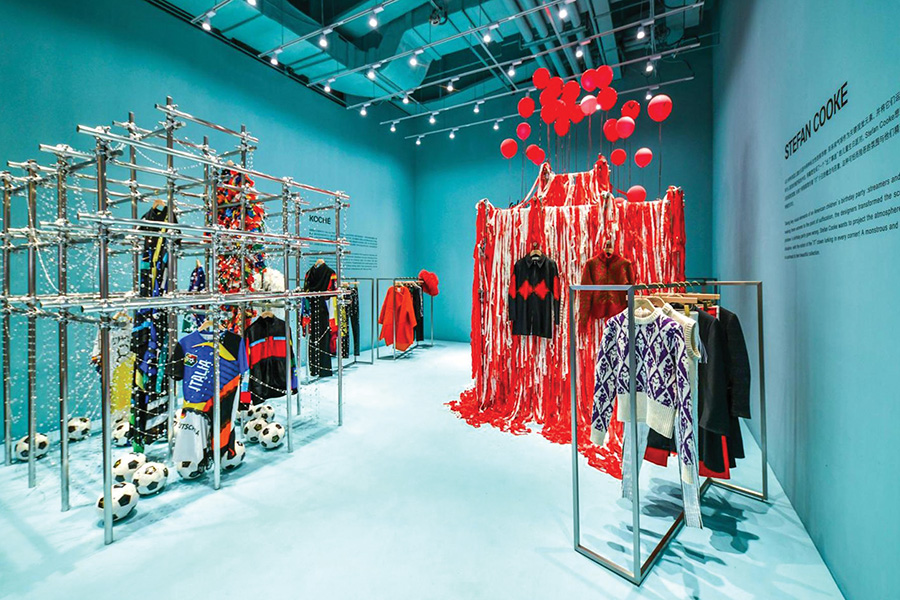
Seiya-Nakamura Pop Up at TX Huaihai mall, Shanghai
Overall, retailers are able to create more immersive and entertainment-driven experiences, something that is predicted to be a key trend for 2021. Alongside pop-ups, McKinsey’s State of Fashion 2021 report suggests that transient retail stores could also be an opportunity for both retailers and landlords. The report cites the TX Huaihai mall in Shanghai as an example to follow, with the mall set to feature a rotation of brand pop-ups changing every three months in a bid to keep up with young consumers desires for newness.
10. Rise of mixed-use developments
Unlike traditional shopping centres, well-designed mixed-use developments are certainly gaining momentum. Again, the trend is not new, but the pandemic has likely brought many projects forward by at least a few years. From a business point of view, diversifying assets as opposed to a single type of tenant makes perfect sense, particularly in the current climate. Yet other reasons directly influence this move. As people spend more time at home, they are increasingly favouring the kind of destination that feeds the functional requirements of their lives, and at the same time helps them find the social interaction they crave, especially now.
People want to feel connected with each other and their local area, and such multipurpose environments can help create that thriving community, where they can live, work, play, eat and shop.

Shanghai Greenland Centre, an urban farm mixed-use development
To sum up, a lot of these trends were already happening pre-pandemic, but COVID-19 has made them become even more urgent now.



